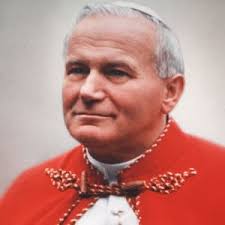It has also been published as ‘Planet Plane’ and ‘The Space Machine’ under the name John Beynon.
Genre: Sy Fy
GoodReads meta-data is 189 pages rated 3.23 by 525 litizens.
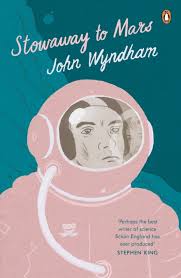
Verdict: What a relief, it has punctuation.
In far distant 1981 there have been Moon orbits but no landings. Why bother, there is nothing there but moon rocks. George Soros has put up millions as a prize for the first flight to and from Mars. Some have tried and failed. Pundits are sure spaceflight is impossible, and publish their opinions as facts on Faux News where Soros is likened to satan since both words start with ’S.’ It was ever thus.
Dale Curtance of the Boeing family builds a rocket in his backyard to win the prize. He is motivated by glory since he already has enough money to build as many rockets as he would like.
Dale is every director’s leading man, fearless, chiseled chin, handsome, genial, sexist, and quick with a shooting iron. He assembles a crew. There is an ageing doctor, an annoying journalist, a navigator who has never been out in space before, and an engineer who is permanently angry, and a stowaway they soon learn. What a carefully picked crew! The doctor will study the flora and fauna. The journalist will keep a factual log. (Fiction to be sure.) The navigator does nothing. The engineer sulks. Dale is fully occupied with chin maintenance. Then the Gloria Mundi blasts off for three-month trip to Mars where they will land and from which they hope to return.
The stowaway is Joan who has come to help. Help? How? By translating Martian. Huh? It seems is a six-legged machine showed up at her father’s farm and she learned Martian from it. Well, so she asserts since no else but Joan and Dad saw the contraption. Those two were sure it was not of this world. That it was intelligent. That….. It did not communicate and yet it did. So goes the circle. Then it vaporised itself. (If only Faux News would do that.) They were convinced it is/was an ambassador from Mars. Having studied the markings on the machine, Joan now feels qualified to translate from Martian. She qualifies for President Tiny’s cabinet with that grasp of facts.
The 1930s sexism is piled on without remorse. Joan is belittled, assaulted, patronised, insulted, and still expected to clean the coffee cups. In fact, this oppression is so detailed, a reader might begin to suspect Wyndham of irony. Or is that too long a reach? Hmmm. See below.
Mid-flight there is a seminar on the relationship between man and machine, and that is man, not woman. It is superficial, vague, and unfocussed enough to be one of those panel discussions on the ABC. They never once refer to the spaceship in which they ride as a machine. Indeed, there is no reason for them to blast off if this is all they have to talk about. Though it becomes relevant, sorta when they get to Mars.
Mars is almost entirely populated by AI machines because the human-like Martians are dying off. There is a declining birth rate, no doubt due to Hillary Clinton, and ever lower resistance to disease, thanks to the anti-vaxxers among them. The remaining Martians see the continuation of the machines as the natural order of evolution and accept it. One tries to explain this attitude to an Earthling, who goes all Luddite and chews an Opal card. This is the most interesting part of the book, but Wyndham had not yet hit his stride and it is talky, talky, and talky. In it, however, Joan is proven right about much for which earlier she was ridiculed by the blokes. That is why I wondered if there was irony in the way the misogyny was laid on. (Albeit there are loose ends, i.e., I never did figure out who sent the machine to Joan’s farm.)
John Wyndham Parkes Lucas Beynon Harris
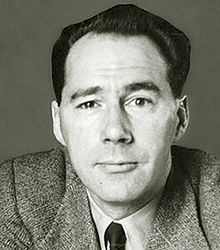
was the son of a barrister. After trying a number of careers, including farming, lawyering, and advertising, he started writing short stories in 1925. This book was fifteen years before ‘Day of the Triffads’ (1951) and nearly twenty years before ‘The Midwich Cuckoos’ (1957), which became the film ‘The Village of the Damned’ (1960). In these he certainly hit his stride. Each is unique and unforgettable.
What’s so great about 26 October?
1825 The Erie Canal of 363 miles opened, connecting the Great Lakes with the Atlantic Ocean via the Hudson River. It produced an economic boom along its route and made Buffalo a sea major port for products from Chicago and points west as well as from Canada. It is often forgotten that the United States has northern and southern sea coasts. I have been to Syracuse and Utica on the route.

1905 Sweden conceded independence to Norway in a peaceful though rather fraught conclusion to tensions. Pictured below is a monument to that event. Been to Sweden a couple of times but want to go to Norway to see the giant paper clip. Yep.
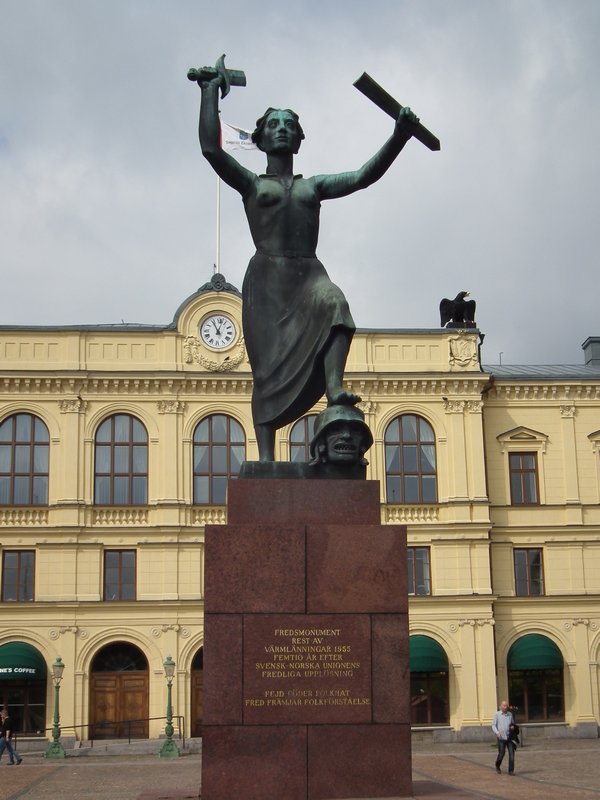
1922 Gertrude Bell (1868-1926) was appointed Head of Antiquities in Baghdad, one of her very many claims to fame. In this job she organised the systematic identification, documentation, and preservation of the human heritage to be found there. She also did some of the finding. She was here, there, and everywhere in the Middle East.

1958 Pan Am began flying passenger jets from New York City non-stop to Paris in a Boeing 707 which made the world smaller, and smaller. There was a brass band send-off. I flew with Pan Am once.
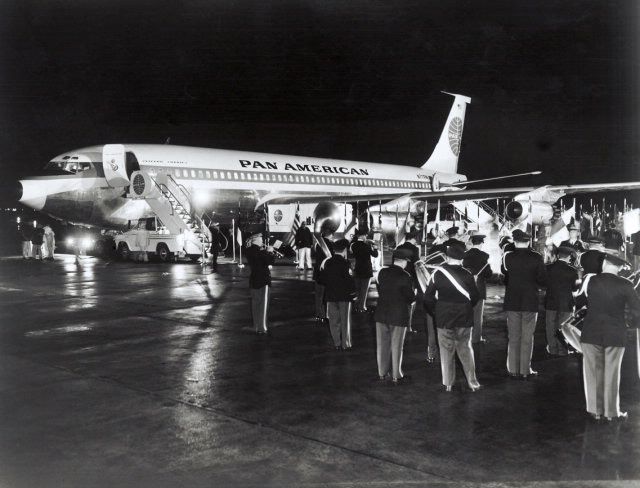
1986 Bill Bruckner entered Baseball’s Hall of Infamy. Mookie Wilson ran out the ground ball, as few millionaire players do today while the white ball eluded Bruckner’s glove and the Red Sox found another way to lose. Members of the Red Sox nation have forgiven but not forgotten this error. Seen the Green Monster with my own eyes.

25 October – What a difference a day makes!
1415 Henry V at Agincourt prevailed over a French force five times larger with the long bow made from Welsh Yew wood. The elasticity of the yew gave the bow a range greater than anything else, making it the artillery of the day. Its arrows struck with sufficient force to penetrate a knight’s armour. It was good night for the knights. Hundreds were killed before they came within range of their weapons. Hundreds more were killed after surrendering.
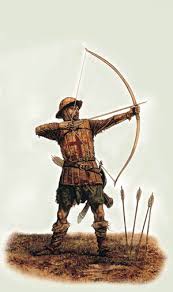
1616 Dutch sailor Dirk Hartog became the first recorded European to set foot on Australia’s western coast, and he left a message at Cape Inscription, Western Australia.
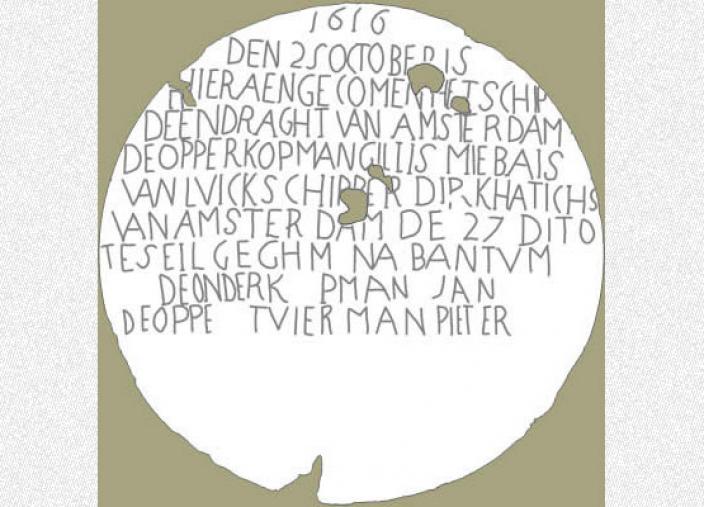
1854 At Balaclava the Light Brigade by mistake charged into death and legend.
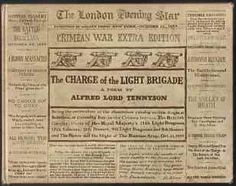
1955 The Tappan Stove Company sold the first microwave oven. It was wall mounted and in today’s US dollars cost about $12,000. It weighted about 700 pounds. The wall and the weight were insulation.

1971 United Nations seated People’s Republic of China and to expel the Nationalist government of Taiwan.
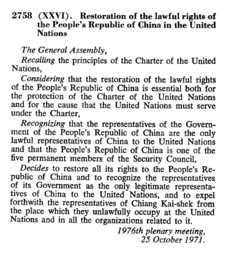
24 October
1861 Western Union sent the first telegram coast-to-coast in the United States from San Francisco to Washington D.C. The message had to be repeated along the way.
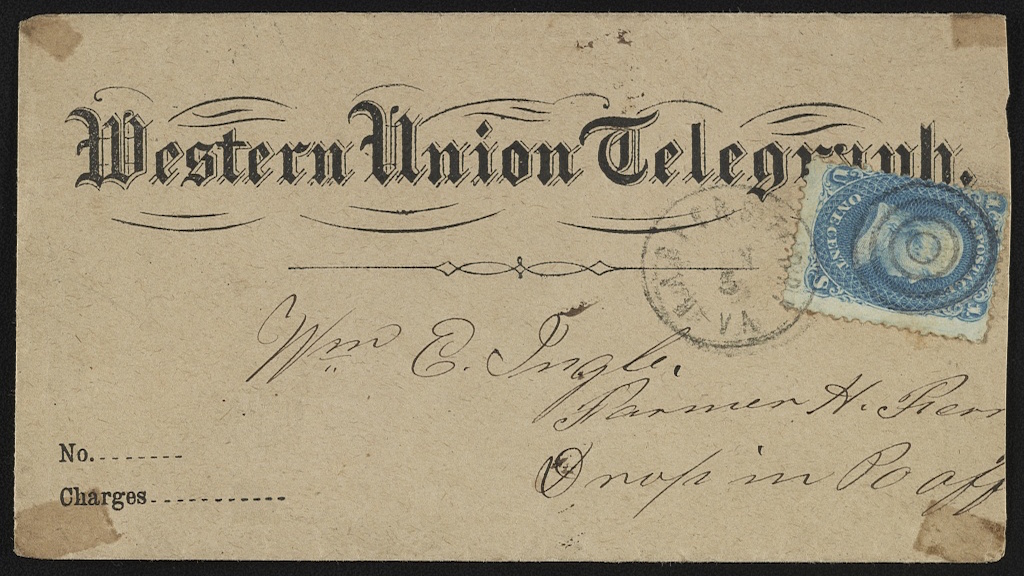
1889 New South Wales Premier Sir Henry Parkes called for federation of the Australian colonies at Tenterfield in NSW. He continued to argue the case for unity thereafter. He was the first, loudest, and most consistent advocate of Australia as a single entity on economic, defence, and moral grounds.

1897 First newspaper comic strip appeared in the New York Journal, ‘The Yellow Kid.‘ This rag was a Hearst newspaper printed on yellow paper, as the Financial Times today is printed on pink paper, leading the Hearst press being called Yellow Journalism as short hand for the Fox News of the day.
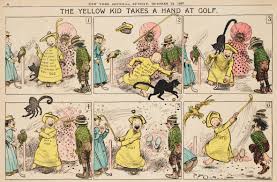
1929 Black Thursday – the first day of the stock market crash which began the Great Depression. Thus began the Great Depression that lasted for a decade. So far Hillary has not been blamed for this.
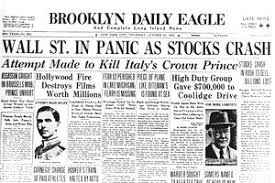
1946 The U.N. charter was ratified by the then 5 permanent members and 46 member states. The agencies of the UN have done much good since then.
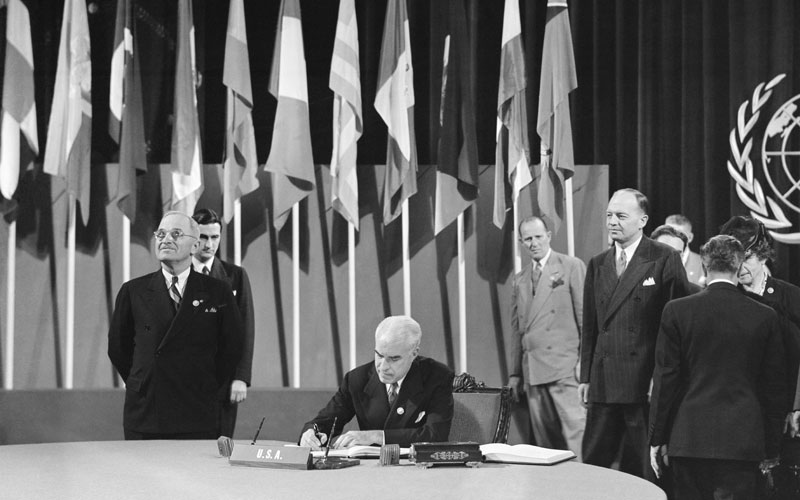
‘The Astounding She-Monster’ (1957)
IMDb meta-data: 1 hour and 2 minutes (it seemed much longer than that) and rated a generous 3.3 by 686 dopes.
Genre: Sy Fy and Bore.
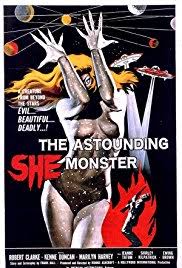
Verdict: Two good things about it are: It does not star John Agar and Robert Clarke keeps his shirt on.
The stooges kidnap an heiress and head to the high Sierras for a spot of ransom. Sounds far better than it is. While this is played out in slow motion, or so it seemed, a flash of light in them thar hills occurs and then a woman in a skin-tight body suit with exaggerated eye brows walks from the woods to the out of focus camera. She stays out of focus. She walks like she has the OED balanced on her head. Carefully.
The inference is that she is an alien emanating a blurred aura. The fraternity brothers like the skin-tight part but not the blur. However the blur was probably necessary to get the picture aired in the time of the Hollywood code.
To sum up, she wanders around the woods killing everything and everyone she meets. A dog, a man, a bear, a woman, a butterfly, a fox, another man. Obviously she is an American diplomat come to make the peace of the dead. I kid not. Read on.
Meanwhile the three stooges have holed up in the aforementioned Robert Clarke’s mountain cabin where he practices taking his shirt off and on away from prying eyes in readiness for his performance — is that the right word? — in ‘The Incredible Petrified World’ (1959), reviewed elsewhere on this blog. Two of the stooges have gats and Clarkie has little choice but to comply. He complies. At times they combine to fend off Skin-Tight, but she picks them off one by one, until….. Spoiler coming.
The pollution in Earth’s atmosphere kills her. Whew! Thank you H. G. Wells for suggesting that in 1891.
But wait there is more!
The locket Skin-Tight wore was not an intergalactic fashion statement after all for it contained a message written in copperplate English handwriting, declaring her to be an ambassador who has come in peace! Pause.
Just think, someone got paid — not much we may hope — for writing this.
How will the home-world react to the death of this ambassador. Will another come? A bigger, a badder, a meaner one? The End. Was a sequel planned? Does it exist? Can it be avoided?
Does it sound like ‘The Day the Earth Stood Still’ (1951) without the depth? Yep a derivation which these days is called ‘reimagining,’ i.e., trivialising with CGI.
Nota Bene. This ambassador made no effort to communicate but her touch was fatal to everything. The opening voice over went on about cosmic retribution which was heard by the minority paying attention, but this is never squared with the peaceful mission revealed after the body count at the end.
The young heiress looks about fifty. The two goons and their moll look retarded. The direction looks zero. Once the actors are on their floor marks, they stand still to retain camera focus. There are voiceovers which indicate the lack of a sound engineer. Perhaps 90% of the film is in one nearly bare room. Cheapo. For the drive-in market where no one would see it.
Robert Clarke grew up in Oklahoma movie struck from a young age. He tried hard and seems affable enough on screen, and much more alive than say John ‘Oak’ Agar. Clarke’s other credits include ‘The Man from Planet X’ (1951), ‘The Incredible Petrified World’ (1959), and ‘Beyond the Time Barrier’ (1960), which are reviewed elsewhere on this blog. What a Sy Fy CV. He never made it in movies and like many other B-movie actors he went into television where he compiled many credits.
The fraternity brothers talked me into watching this one and they will pay for that when I read long passages from Martin Heidegger to them while they eat. Indigestion is sure to follow.
23 October!
When What
1760 The first Jewish prayer book was published in North America. A milestone in religious tolerance.

1915 25,000 women marched down Fifth Avenue in NYC for the vote, this gathering became the League of Women Voters. I worked for the local branch of the League a few times when in high school and then college.
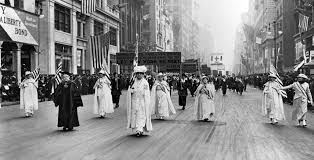
1956 The Hungarian revolt against Soviet domination began with a large and peaceful protest. The peaceful protest led to reaction, reprisal, and repression and a Hungarian diaspora. There were many in Edmonton.
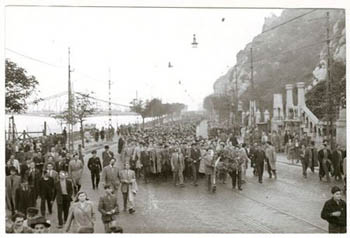
1963 Dr Who aired with William Hartnell. Still airing. Who’d a thunk it!
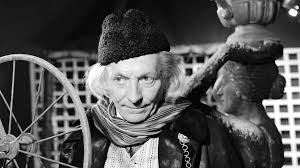
2001 Apple released the iPod. [Words fail me.]

‘Brother from Another Planet’ (1984)
IMDb meta-data is run time of 1 hour and 46 minutes rated 6.8 by 5011 cinemitizens.
Genre: Sy FY, Empathy
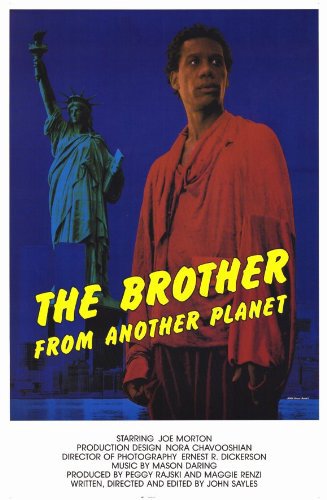
Verdict: one of a kind. Roger Ebert liked it and that is always enough for me.
A being in a B movie space suit frantically hits controls as a craft steaks to a crash in New York harbor. In shredded clothes the being comes ashore on Ellis Island where millions of other immigrants preceded him. He looks like a black man.
In the nocturnal silence we find out some things about him. He lost a foot in the crash and hops around but seems to find this loss only an inconvenience. On the remaining foot are three enormous toes. Later he will be referred to as ‘a three-toe.’ More important, he has psychic powers for when he slumps against a wall or sits on a bench he hears in the air words spoken there by others in the past in a jumble as though recorded on the surfaces. He is frightened by these voices. But then as always he is mute.
After sleeping on the floor, in the morning mist he sees the city across the harbor and somehow gets on a scow that takes him to Harlem where he hops around…..until his foot regenerates. He observes the animal life on the streets of Harlem, and proves to be a quick learner with some survival instincts and an NBA jump.
We also learn that he has a way with machines, cash registers, pin ball games, video arcades devices, and so on. He meets a great many people most of whom ignore him. He takes refuge in a bar where some of the bar flies are willing to help a brother through hard times. A social worker finds a place for him to lodge, and gets him work repairing machines.
Brother discovers Earth women and….. No spoiler.
Then the men in black appear, just as strange as he is. They are after Three-toe, as they call him. I was never sure if this term applied to him in particular or was a reference to his kind as a whole. They, too, have to adapt to an alien environment. However, they speak though not too well and are white-bread.
There are some marvellous vignettes. Two attendees at a communication workshop talk to Brother for hours without realising he is mute. An administrator intimidates the men in black with endless forms to fill out. At the moment of truth the bar flies go for it on fourth and one.
Loved that Brother looks for messages in street graffiti, and finds one!
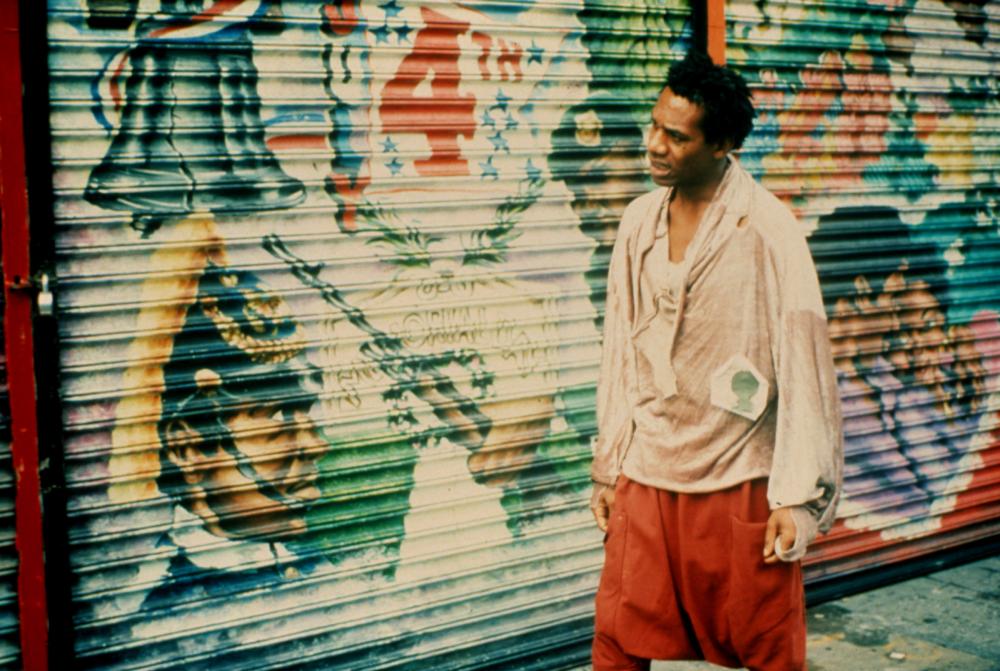
It has to be said that the denouement is limp. Finding an end to this ride would be a challenge to anyone.
It polarises the opinionators on the IMDb with many ones and fives. The one-givers complained about all the things I liked about it. Slow pace, no shot ‘em up. A divergence into the world of drug users and suppliers, for whom ODs are an interruption to cash flow. The opinionators did not seem to mind Brother’s vigilante justice, though I did. One such opinionator went on about the gimmick with Brother’s eyeball, denouncing it as unrealistic. Well, don’t try it at home, that is for sure. But really…it is science fiction Mr Inane.
John Sayles wrote, directed, edited, and swept up afterward. He is also one of the men in black. He financed the production with the payment for his dreadful script for the dreadful ‘Battle Beyond the Stars,’ reviewed elsewhere on this blog. Forgive but don’t forget.
Director and writer John Sayles is a rarity, an intellectual in film-making. Moreover, he is a utility player, as they once said in baseball, he acts, he writes, he directs, he paints sets, he produces, he edits. He learned the craft and the values of economy and versatility from Roger Corman. Sayles often hires himself out in one capacity or another to raise money for own projects like this one.
‘The Gamma People’ (1956)
IMDb meta-data is 1 hour and 19 minutes, rated 5.3 by 435 cinemitizens.
Genre: Sy Fy
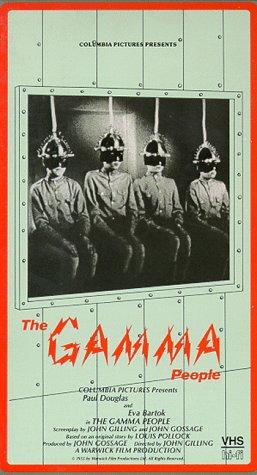
Verdict: Mixed. Good moments but no whole.
Two journalists mistakenly enter the Democracy of Gudavia and soon wish they had not done so. They are an odd couple, Brit Leslie Phillips is the photographer who plays the effete skirt chaser he made his own and burly and blunt and brash Paul Douglas is the American wordsmith.
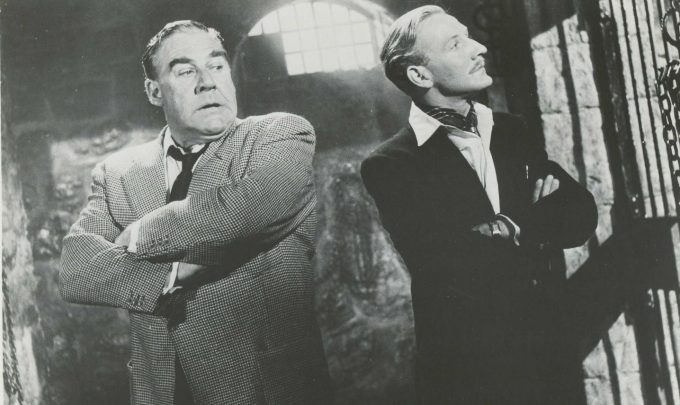
They discover that once in Gudavia there is no way out for in the alpine castle is a mad scientist trying to develop super humans by dousing them with gamma rays. He wants no publicity from these two. One of his prodigies is the piano playing Hedda who resists by being creative, and the other is the martinet Hugo. These two are both about twelve years old.
They also find Eva Barton; that convinces them to stay. ‘Amen,’ sighed the fraternity brothers.
There are some nice scenes of the mountains on travelling mattes. A few scary moments with zombies from the mad scientist’s failed efforts. For, as he notes, mindless zombies have their uses, in a remark that anticipates the Tea Party. There is another scene that anticipates ‘The Village of Damned’ (1960).
But Hugo steals the show. He is the super-kinder who does the Mad Scientist proud. His weakness at the end is finely judged and effective though his subsequent transformation is saccharine. But the turning point is well done. He is played by Michael Caridia who was fourteen at the time.
The screenplay draws on many tropes, the micro state of Gudavia that appears on no maps, the mad scientist in the hilltop castle playing god, his hollow-eyed zombies, the Hitler youth uniform Hugo wears, the loving grandfather…… It has so many loose ends that none of them are tied. It is partly farce as with the comic opera military of Gudavia, and deadly serious when Hugo is a piano critic.
Eva helps Dr Mad in his experiments without a qualm until the journos arrive, and then goes all distressed. See, here is the evidence, and get a load of those condensers.
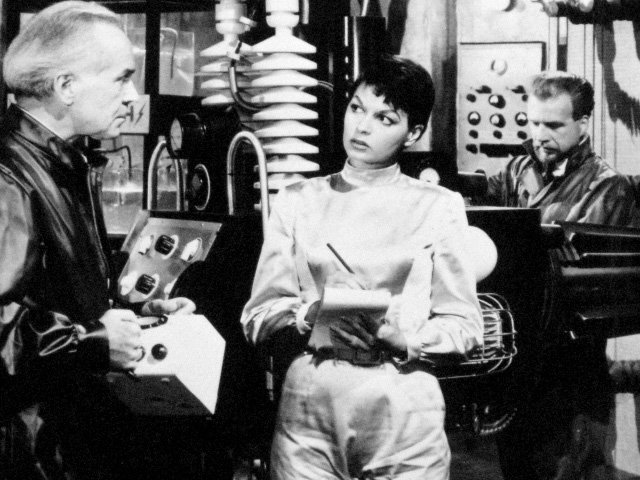
There is a nice scene in the telegraph office where the official is the perfect bureaucrat. Ever so polite and ever so pointless.
The project had a vexed production and at some point a young Albert Broccoli with Irving Allen took over production. Yep, them. Looking back from Chubby’s later career, one can see first drafts for scenes used later in the Bond films.
It was made in England. Douglas was there with his wife Jan Sterling who was playing Julia in production of ‘1984’ (1955), which has its own version of little Hugo. ‘1984’ and this film were released as a double bill at the end of 1956, one dead serious and one not.
There are comments on Paul Douglas’s career in the review of ‘It Happens every Spring‘ elsewhere on this blog and also on Eva Bartok’s in the review of ‘Spaceways’ elsewhere on this blog. He quit a successful career in radio sports journalism to try his hands in movies at age 42. She had more drama in her private life than in any movie she made, escaping Naziis and then Communists, and then a great many men.
‘Varina’ (2018) by Charles Frazier.
Genre: fiction and biography.

GoodReads meta-data is 368 pages, rated 3.7 by 4,857 litizens.
This book is a novel about the life and times of Varina Howell (1826–1906). Who? Varina Davis. Huh? Mrs Jefferson Davis. If it is still a ‘Huh’ go back to Angry Birds on the Smartphone. I read it as a biography of this First Lady. First Lady? Read on.
As a girl Varina was too tall, too serious, too dark, too talkative, too well read, too interested in the wider world, too big, too judgemental, too…. At seventeen her family was only too glad to see her wed Jefferson Davis, more than twice her age.
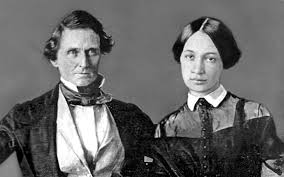
Jefferson came with baggage. He had married for love years before. It was a match not sanctioned by either family and the couple eloped. She was the daughter of a future president, Zachery Taylor. It was the time of the anti-vaxxers. On the honeymoon she died. Jefferson went into mourning and stayed there for seven years. N.B. Her parents did not want her to marry a soldier as Davis then was, not that there was any objection to him personally. They did not blame him for her death.
His family was an older brother, Joseph, who by primogeniture owned and ruled the family plantation with a whip in hand. The much younger brother, Jefferson, had nothing but the sufferance of Joseph. There was little of that. To get Jefferson out of the way, Joseph gave him a property to manage, but he retained ownership.
He pushed Jeff into the army to get him out from underfoot, and later pushed him into politics for the same reason. He disapproved of the first marriage because he wanted a dowry out of it, and when the couple eloped there was no dowry. The later marriage to Varina was arranged to suit Joe. Jeff had been moping around for seven years after his first wife’s death. In this telling Joe simply wanted to get Jeff settled. Not that he felt sorry for him, more annoyed with his constant gloom.
Old Joe had met Robert Owen, when the latter was on a tour in the United States, and Joe tried to realise some of Owen’s philosophy on his planation, adapting it to the slavery that — in Old Joe’s terms — united capital and labour. His descriptions of this arrangement are ridiculous but have the sort of inner logic that appeals to an autodidact. He had the words but not the substance of Owen’s practice per New Lanark, which we have visited.
Davis served first in the Black Hawk War in which few shots were fired in anger (where he may have crossed paths with Abraham Lincoln) and then in the Mexican War with distinction, and traded on that record to enter politics, pushed at every step by Old Joe. He become a Senator and then Secretary of War. He and Varina lived for years in Washington on the D.C. and no doubt he had a case of Potomac Fever. She liked the life there, entertaining and being entertained. The soupçon of Europe ambassadors brought. The access to northern merchandise unknown in Mississippi. The aura of history made and in the making. All of this appealed to this very young woman.
In ‘Varina’ there are several accounts of close personal relationships between owners and slaves. These are very nicely done. Jefferson had a body slave named Pemberton who went with him everywhere and who came to run the planation in all but name. They drank from the same cup; talked each morning and evening of the work. Yet occasionally when Jefferson was irritated a sting came into his voice, and Pemberton went quiet. Master and Slave were well aware of each other’s place.
In another instance there was a young women who grew up with a slave companion. They gossiped together; giggled together; picked out clothes together. They were like sisters, but not quite. Then one day when the white woman needed money she sold the slave’s ten year old child for the money to buy a new dress. The slave woman was heartbroken. When she wailed and cried, she was beaten…into submission.
Getting back to the book at hand, the story is told in flashback. Varina is interviewed long after the war. Much of her story concerned April 1865 and after. The evacuation of Richmond and the long flight south toward the El Dorado of Havana. In the course of this flight she observed the ruination visited on the Carolinas, and Georgia.
More often then than not doctors prescribed morphine for women, and Varina mixed hers with red wine, a lot. Doped up and docile seems to have been one goal. The name ‘Varina’ is a variant from the Greek for Barbara, referring to those who do not speak Greek.
Toward the end of her time, she edited and finished the memoirs that Jefferson could not complete. This seems an act of financial necessity in these pages and nothing more. The memoirs were an asset to be realised in difficult times.

There are vivid descriptions time of life along the Mississippi, sometimes easy going and at other times deadly.
It starts slowly and is written in the present tense. This latter is enough to put me off but one night for the lack of an obvious alternative on the Kindle I persevered, and it got more interesting and the present tense faded. Equally irritating is the absence of conventional punctuation, like quotation marks to set off and identify statements by the characters. Grrr!
After reading much about Jefferson Davis I wondered how anyone, wife included, could put up with him – pompous, prickly, proud, and worse. In both Allen Tate’s ‘Jefferson Davis: His Rise and His Fall’ (1929) reviewed elsewhere on this blog and Eli Evans’s ‘Judah Benjamin: The Jewish Confederate’ (1988), reviewed elsewhere on this blog, Variana figures as a player in the tragedy of the Confederacy.
Benjamin was one of the very few Richmond politicians who got along with Davis and he did so in good part by working with and through Varina, but none of that figures in this account, which is weighted to her life before and after the Confederacy, not during. That is too bad because my impression is that she exercised a moderating influence on the generally intractable Davis.
Which parts of the story are fact and which are fiction? I cannot say but the author seems scrupulous and includes a short bibliography.
 Charles Frazier
Charles Frazier
Side Bar: Fanny Wright likewise tried to apply Owen at Nashoba Community in the 1820s Tennessee. Her aim was to teach slaves to earn their freedom through work so that emancipation would come at no cost to owners. While the rhetoric was high, the reality was not. I visited the locale in Memphis and did some library work on this community in Nashville a time ago. It was celebrity vanity at work.
22 October as never before or since.
1721 Peter the Great became emperor of all the Russians, and a quite few others. I once found this statue referred to as depicting Catherine the Great in a book by two journalists. Thus was confirmed many of my suspicious of the fourth estate. Seen it with my own eyes.
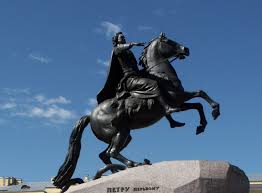
1884 Twenty-six countries adopted Greenwich Mean Time as longitude zero, with 24 time zones, at conference in Washington D.C. Greenwich was the focal point of a great many nautical charts and maps and was chosen because of that.

1938 Chester Carlson (1906-1968) invented the photocopier in the family kitchen. He tried to sell the machine to IBM, RCA, Kodak and others, but they see no use for a gadget that makes nothing but copies. He called it xerography meaning literally dry writing as distinct from the wet process of mimeograph. He made several fortunes out of it and gave most of it away, including a good deal to the United Nations. Below is the first exposure he made.
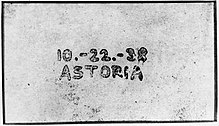
1975 USAF gave Sergeant John Matlovich a General Discharge because he had publicly declared his homosexuality. This charge denied Matlovich pension and health entitlements. A court later found for Matlovich. The medals were for killing, and the GD was for loving, he said.

1978 Pope John II was inaugurated. Polish born, he held on until 2005. He galvanised the papacy like few others and became a world leader in more than name.
